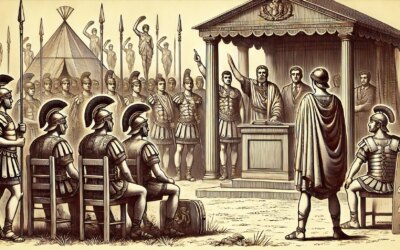The Social Divide in Early Rome
In the early years of the Roman Republic, society was sharply divided between the patricians—Rome’s hereditary aristocracy—and the plebeians, who made up the majority of the population. While plebeians served in the army and paid taxes, they had little political influence and faced severe economic hardships, especially from debt slavery.
The Crisis of 494 BC
Years of military campaigns and crop failures left plebeian farmers deep in debt to patrician creditors. Many were imprisoned or enslaved for unpaid debts. When Rome faced another military threat, the plebeian soldiers refused to fight unless their grievances were addressed. In a bold act of defiance, they withdrew from the city and camped on the Mons Sacer, or Sacred Mount, outside Rome. This unprecedented action became known as the First Secession of the Plebs.
Negotiations and Reform
With Rome’s defense crippled, the patrician Senate had no choice but to negotiate. Mediators brokered an agreement granting the plebeians their own political representatives: the Tribunes of the Plebs. These officials had the power to veto decisions harmful to plebeians and were considered sacrosanct, making it a capital crime to harm them.
Impact on the Roman Republic
The settlement marked a turning point in Roman politics. The creation of the tribunate gave the plebeians a formal voice in government and laid the foundation for further reforms over the next two centuries. The Secession also demonstrated that collective action could force meaningful change, a lesson that resonated throughout Roman history.
Legacy
The Secession of the Plebs of 494 BC is remembered as Rome’s first great social revolution. By institutionalizing plebeian representation, it began a slow but steady transformation of the Republic from an aristocratic oligarchy toward a more inclusive—if still deeply unequal—political system.





